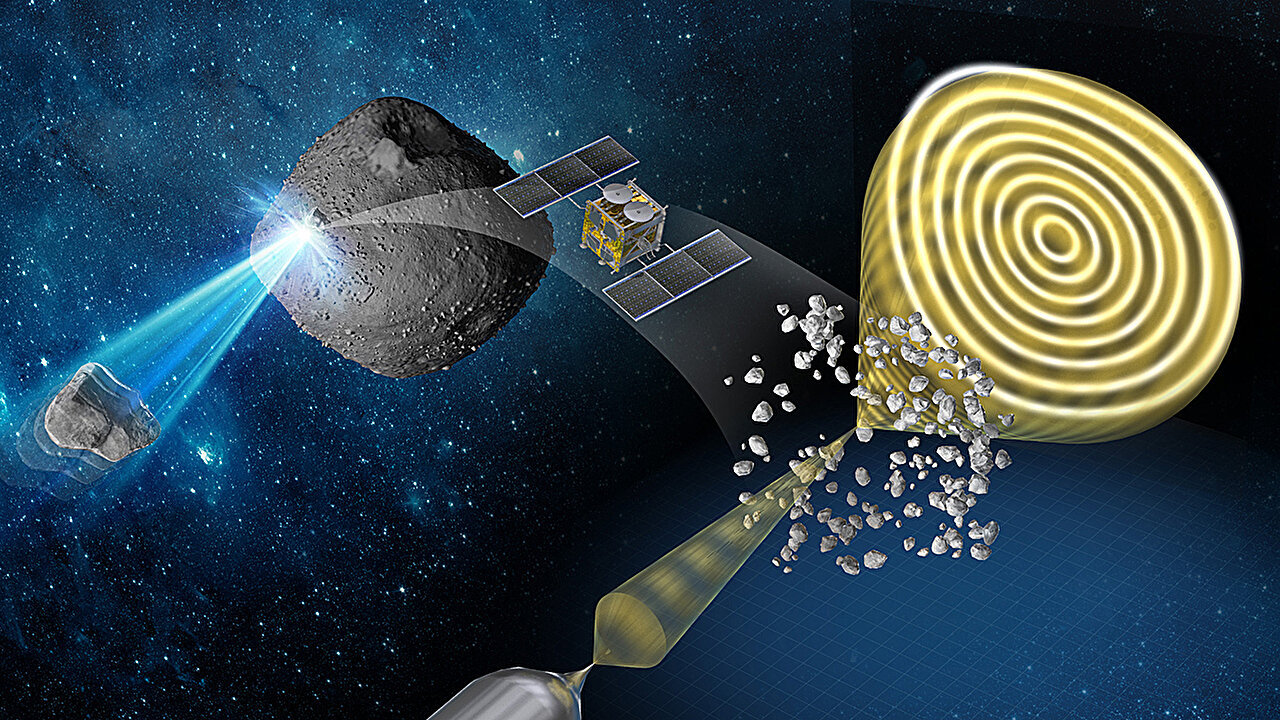Japanese scientists continue to study samples of the asteroid Ryugu, which were brought by the Hayabusa-2 probe a few years ago. They applied a new technique to find out that some of the rocks and minerals forming it were formed under the influence of intense bombardment by high-energy particles of the solar wind.

Samples from the asteroid Ryugu
Analysis of samples obtained from the asteroid Ryugu by the Hayabusa-2 spacecraft of the Japanese Space Agency allowed us to obtain new information that they survived intense bombardment by charged particles. The results of the study, conducted by Professor Yuki Kimura from Hokkaido University and his colleagues from 13 other institutions in Japan, are published in the journal Nature Communications.
Hayabusa-2, which reached the asteroid Ryugu on June 27, 2018, collected samples during two careful landings, and then, during a flyby near Earth in December 2020, dropped them to the surface. Now the spacecraft continues its space journey. The plans include the observation of two other asteroids, which are scheduled to take place in 2029 and 2031.
The research used beams of electrons that penetrated through the samples to reveal details of their structure and electromagnetic properties. This method is called electronic holography.
What can the samples from the asteroid tell us?
Due to the fact that samples collected from an asteroid can be examined in an Earth laboratory, scientists can learn a lot about the conditions under which these celestial bodies were formed. In particular, scientists have learned that they have been affected for a long time by unfavorable “space weather” in the form of high-energy solar radiation.
It is impossible to assess all this by meteorites crashing into the Earth’s atmosphere. Firstly, they often originate from the interior of asteroids, so they might not have undergone such dramatic changes for millions of years. Secondly, heating during the passage of the Earth’s atmosphere could greatly change them.
“The signatures of space weathering we have detected directly will give us a better understanding of some of the phenomena occurring in the solar system,” Kimura says. He explains that the magnetic field strength decreased as the planets formed, and measuring the residual magnetization on asteroids can reveal information about how this happened.
Framboids
A particularly interesting discovery was that small mineral grains called framboids, consisting of magnetite, a form of iron oxide, completely lost their normal magnetic properties. The researchers suggest that this was due to a collision with high-speed micrometeoroids with a diameter of 2 to 20 micrometers.
The framboids were surrounded by thousands of metallic iron nanoparticles. By figuring out where they went, scientists hope to learn more about the evolution of asteroids.
“Although our study is primarily for fundamental scientific interest and understanding, it could also help estimate the degree of degradation likely to be caused by space dust impacting robotic or manned spacecraft at high velocity,” Kimura concludes.
According to phys.org
Follow us on Twitter to get the most interesting space news in time
https://twitter.com/ust_magazine


